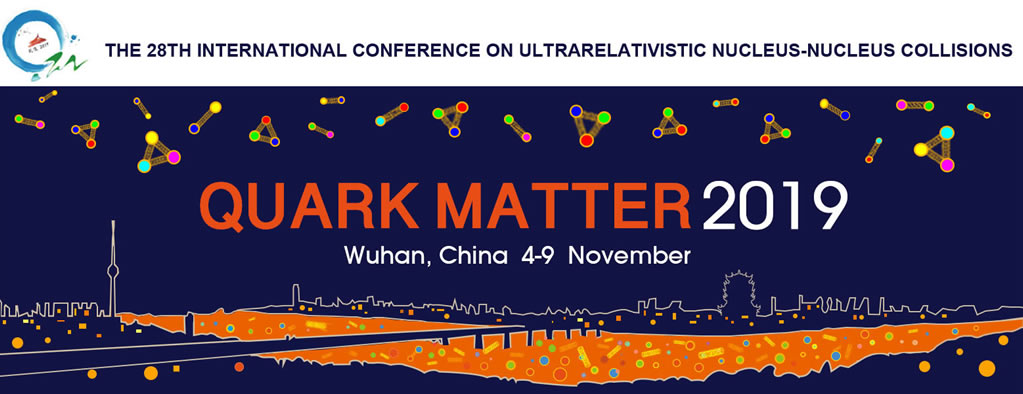Conveners
Parallel Session - EM probes I
- Ming Shao (Univ. of Sci. and Tech. of China)
In ultra-relativistic heavy-ion collisions, one expects copious rates of $\gamma+\gamma$ processes through the interaction of the large electromagnetic fields of the nuclei, which can produce new particles (e.g. leptons) or even lead to light-by-light scattering via loop diagrams. The latter process is a notable prediction of QED and was only recently observed by ATLAS using the full 2018...
Ultra-relativistic heavy ion collisions are expected to produce some of the strongest magnetic fields ($10^{13}−10^{16}$ Tesla) in the Universe [1]. Recently, there has been intense interest in the magnetic fields produced by heavy ion collisions and their possible observational impacts through phenomena like the Chiral Magnetic Effect. The initial strong electromagnetic fields produced in...
We present the first study quantifying the sensitivity of hadron and photon observables to the early-time evolution in heavy-ion collisions which implements a realistic pre-equilibrium stage with effective QCD kinetic theory [1, 2] and a state-of-the-art hybrid (IP-Glasma + MUSIC + UrQMD) framework [3]. We calculate photon emission from the pre-equilibrium phase by folding the system's energy...
Photo-produced vector mesons in ultra-peripheral Pb-Pb collisions at forward rapidity are sensitive to the small-x parton distribution functions (nPDFs) in the target nucleus. In pPb collisions, measurements of the Z production in forward (pPb) and backward (Pbp) configuration are also sensitive to the nPDFs in another kinematic domain, both probes allowing to study in a complementary fashion...
Cross sections for photon production in hadronic scattering processes have been calculated according to an effective chiral field theory. For $\pi + \rho \to \pi + \gamma$ and $\pi + \pi \to \rho + \gamma$ processes, these cross sections have been implemented into a novel hadronic transport approach (SMASH), which is suitable for collisions at low and intermediate energies. The...
Inducing an electric field in the QCD medium generates an electric current which is proportional to the matter’s electric conductivity. Since quarks and hadrons also carry baryon and strange charge, such a field also respectively produces a baryon and strangeness current whose amplitude depends on baryo-electric and strange-electric conductivities. We dub the combination of these 3 properties...
